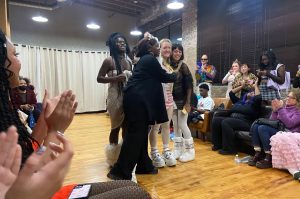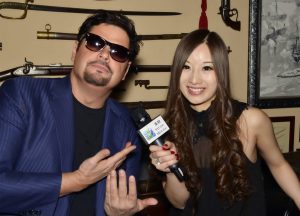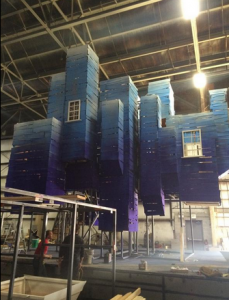
Is there any room for fashion in technology and can technology be fashionable?
Thanks to movies such as “Revenge of the Nerds,” a certain stigma is attached to the word technology that instantly evokes an image of flooded trousers, pocket protectors and intense glasses frames.
The current “hipster” trend does a wonderful job recreating Robert Carradine circa ’84, an exaggeration of someone who is completely immersed in computers and electronics.
Innovations such as textile interfaces (control panels sewn into clothes) are no longer objects exclusive to science fiction films; they have moved closer to production lines.
“It’s a classic scenario of reaching into your pocket for your phone. Instead, you have a jacket with an embroidered interface, from which you can control different types of electronics,” says Clint Zeagler, founder of Pecan Pie Couture, and research scientist at the Georgia Institute of Technology.

Zeagler regularly heads projects that aim to integrate interfaces onto garments like jackets and even slacks. Other projects include a swatch book with an electronic spine, which in turn can be connected and viewed on a computer screen. “What I’ve tried to do is create a platform for fashion designers to get over the fear of tech in fashion,” he said.
We’re now in an age where we no longer have to pull off our gloves to handle our iPhones, thanks to the conductive thread being implemented into gloves. Clothing companies are now creating garments with LED lights woven into the fabrics. Fashion and technology may appear to be at odds, but they’re both constantly evolving and adapting to one another.
Zeagler is among the creative minds who are on the forefront of the tech side. “There’s the use of tech in fashion for aesthetic reasons, as a place to express an artistic expression, but we work on a more technical, functional reason,” he said, also speaking about fellow researcher Thad Starner, the director of the contextual computing group at the Georgia Institute of Technology. Starner is also the current technical lead/manager of Google’s Project Glass.
Starner says that any technological concept seen in fashion most likely had a grander purpose. How the conductive thread found in winter gloves that allows us to use our touch screens without taking the gloves off, is an example.
“There’s a whole set of custom line stuff [such as] conductive thread and fabric; it’s such a niche market. That same fabric is used to make suits for people who work on high-powered electric lines. This is stuff you also use to not get killed,” he said.
There is another object that seems unable to stray from purposes such as signifying an ‘open’ or ‘closed’ diner, or blinking the name of an artist on MP3 players: the LED light.
However, currently on display at the Museum of Science and Industry is what at first appears to be an all white, silk maxi dress with a jeweled keyhole halter. It is not until the lights go out when the dress is exposed for what it really is – the world’s largest, wearable LED garment known as the Galaxy Dress.

“We wanted our solution to be truly wearable. We didn’t try to do illusion or science fiction, it was designed to be true fashion,” says Ryan Genz about the dress which he designed with partner Francesca Rosella under the duo’s label, CuteCircuit. Beyond being one of the largest fashion labels to integrate wearable technology, Genz says the concept behind CuteCircuit was to push new materials that would push new innovations.
And push they did. The dress contains over 20,000 LED lights weaved into its fabric, with every inch radiating neon shades of what appears to be each color of the rainbow. This goes for the entirety of the dress except around the halter neckline, zipper adornments, and the end of the bodice, which is adorned with 4,000 Swarovski crystals in total.
Among the LED fashion innovations, Genz also utilizes sensors that are woven into the garments to keep track of the wearer’s movements that are prominent in CuteCircuit’s ‘Twirkle’ collection. “The amount of sparkle it gives depends on how much you move,” Genz said, noting that the more energy put behind the garment, the less battery life it will have. All garments are rechargeable via a USB cable connection.

Another garment that implements sensors is CuteCircuit’s ‘Hug Shirt,’ which was named one of TIME magazine’s best innovations of 2006. The ‘Hug Shirt’ receives wireless signals via cellular Bluetooth, which in turn gives the wearer the sensation of being hugged by that specific wireless ‘hug’ sender.
Genz says the hug shirt is still unavailable, and that CuteCircuit has slowly and “secretly” been coming up with a finalized garment that will be sure to “send a special sensation to someone.”
Related articles
 Haute-Tech for the Future: Pretty Smart Textiles(irenebrination.typepad.com)
Haute-Tech for the Future: Pretty Smart Textiles(irenebrination.typepad.com)
 High-tech fabric intends to make military ops ‘disappear’(sunnewsnetwork.ca)
High-tech fabric intends to make military ops ‘disappear’(sunnewsnetwork.ca)






















Be First to Comment